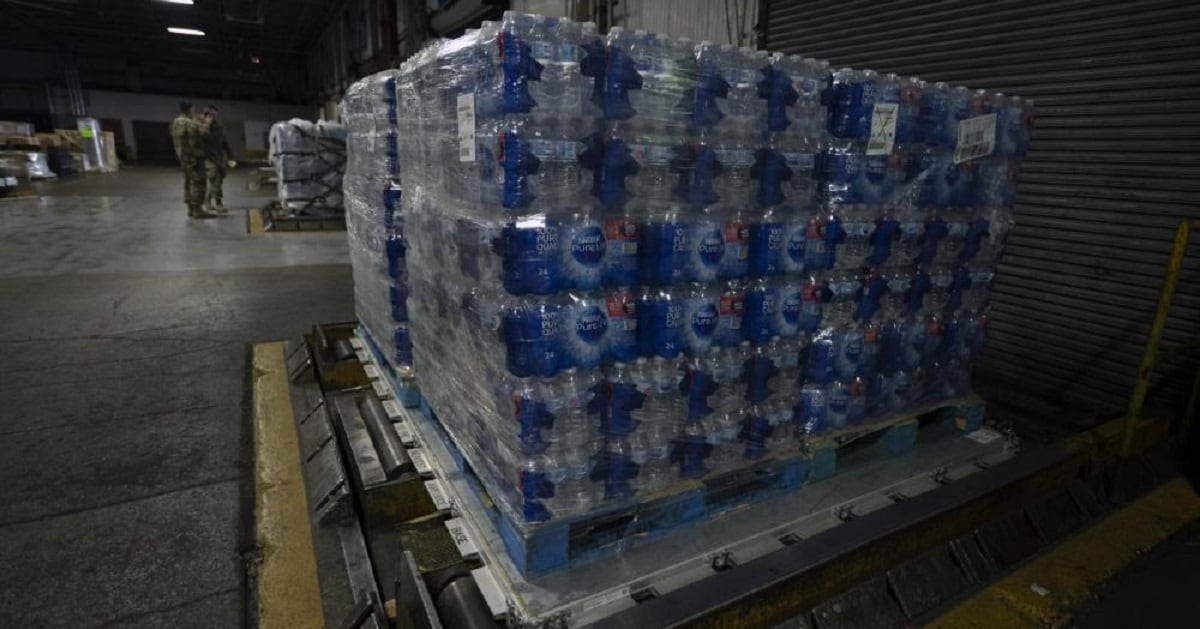JOINT BASE PEARL HARBOR-HICKAM, Hawaii (AP) — The U.S. Navy announced Monday that it is suspending use of a massive World War II-era fuel storage complex above a Hawaii aquifer that supplies nearly 20% of Honolulu’s drinking water — following days of complaints that tap water smells like fuel and has sickened some people.
Navy Secretary Carlos Del Toro traveled to Pearl Harbor and told reporters he was apologizing to everyone affected by what he called a “horrible, horrible tragedy.”
Nearly 1,000 military households have complained about their tap water and some have said they have suffered physical ailments such as cramps and vomiting recently after drinking it.
A water sample returned last week showed the presence of petroleum in water that comes from a well near the underground fuel tank complex that has been the source of multiple fuel leaks over the years.
Del Toro said officials were getting close to determining the cause of the problem and that when the investigation is completed and reviewed, the Navy will adopt water safety precautions.
“This will allow us to implement new safety actions before resuming operations,” Del Toro said.
Separately, the state Department or Health ordered the Navy to suspend operations at the fuel facility, citing the governor’s power to act if there is “imminent peril to human health and safety or the environment” caused by a leak or operation of an underground storage tank system. The department said the Navy could appeal the order.
When asked if the Navy is considering permanently shutting down the fuel tank farm, Del Toro said all possibilities are being explored.
“We’re looking at some very serious options here in the very near future,” he said.
RELATED

Fuel from the tanks is used to power many U.S. military ships and planes that patrol the Pacific Ocean, but Del Toro said the cutoff’s impact on military operations would “have a very minimal effect, if any, at all right now.”
“I don’t want to get into topics with conversations with regards to how long we can continue to do this for national security reasons, but there’s really no minimum operation to our fleet’s activities or activities impacting the Air Force or the Army or the Marine Corps for any near term at all,” Del Toro said.
The announcement came after Hawaii’s governor and congressional delegation called on the Navy to suspend operations at the fuel storage complex that sits above an aquifer that supplies water to urban Honolulu.
Rear Admiral Blake Converse, deputy commander of the U.S. Pacific Fleet, told reporters that the use of the tank farm was suspended on Nov. 27.
“I know there are concerns that we have not been transparent with the results of our testing and our procedures,” Del Toro said. “You have my commitment and promise that the information that we provide is the most accurate information that we have available.”
The Navy last week said a water sample from one of its wells showed the presence of petroleum. The well is near the underground fuel tank complex that has been the source of multiple fuel leaks over the years.
The Navy’s water system serves about 93,000 people. Nearly 1,000 military households complained about their tap water smelling like fuel or of ailments like stomach cramps and vomiting.
The Navy said it would flush clean water through the distribution system to clear residual petroleum products from the water. The process, along with testing, could take up to 10 days to make sure the water meets Environmental Protection Agency drinking standards.
The tap water problems have afflicted one of the military’s most important bases, home to submarines, ships and the commander of U.S. forces in the Indo-Pacific region. They also threaten to jeopardize one of Honolulu’s most important aquifers and water sources.
RELATED

During World War II, the Roosevelt administration was concerned about the vulnerability of above-the-ground fuel tanks to attacks — so the Navy built the tank farm named the Red Hill Bulk Fuel Storage Facility.
The facility has 20 steel-lined underground tanks, which can collectively store up to 250 million gallons (946 million liters) of fuel. The tanks are encased in concrete and stored inside cavities of a volcanic mountain ridge near Honolulu. Pipelines from the tanks run 2.5 miles (4 kilometers) inside a tunnel to fueling piers at Pearl Harbor.
The fuel in the tanks is used by the U.S. Air Force, Army, Marines, Navy, Coast Guard and Hawaii National Guard for ships and aircraft. The Navy has said Red Hill is vital to maritime security, regional stability, humanitarian assistance and continued prosperity in the Indo-Asia-Pacific region.
The Department of Defense has spent more than $200 million on updating the facility and conducting environmental testing since 2006, according to the Navy.
Associated Press writers Julie Watson in San Diego and Mark Thiessen in Anchorage, Alaska, contributed to this report.





